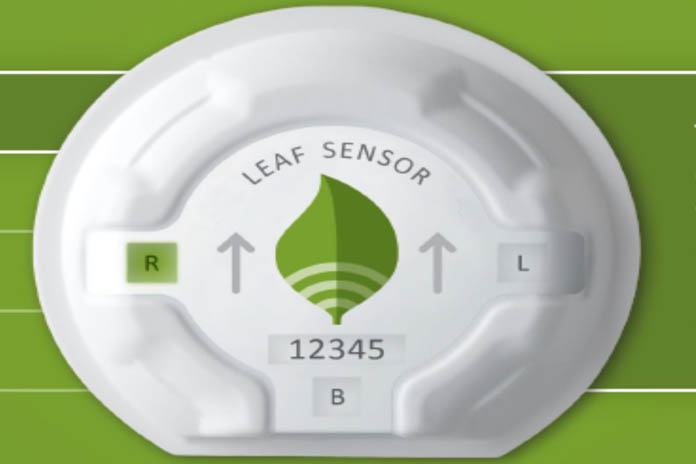Pressure ulcers plague bed-ridden patients with mobility issues and can lead to fatal complications. They are more commonly called bed sores, a less threatening term that almost reduces the severity of the condition. The solution, which is repositioning or turning the patient, sounds deceptively simple. However, healthcare experts believe that they are the cause of 60,000 deaths, annually, in the U.S.
Think if of it as a high-stakes matter of time management. Adherence to prescribed turning and mobility protocols is key for patients at risk of immobility-related hospital-acquired conditions. That is where the Leaf Patient Sensor comes in. It is a small, wireless, wearable medical device that monitors a patient’s position, movement and activity.
Nurses already know to reposition or turn their patients every 2 hours. With multiple patients, however, this can be hard to keep track of. Leaf sends signals to a transmitter in the patient’s room, to a screen at the nursing station, and to each nurse’s computer. A countdown clock turns green when the patient is turned, yellow when 15 minutes are left, and red when turning is overdue.
The sensor is disposable, weighs less than an ounce and uses adhesive that is gentle on frail skin. It is placed on the patient’s chest and monitors their movement and position. Nurses are able to see on their screen which their patients are on, or If they are in an incorrect position. Any independent movement is automatically registered. If the patient repositions, the schedule adjusts on its own.
The data is more refined. Past turning protocols have only focused on patient turn frequency. Leaf accurately measures frequency, angle and the amount of time it takes for blood flow to return to tissue. It combines this information into an Integrated Positioning Index.
The collected data provides a detailed history of patient mobility. Easy to access turning history helps ensure even pressure distribution by showing the patient’s position and the length of time for each of his or her last 20 turns. If the patient leaves their bed or chair, the system temporarily suspends the patient’s turn protocol and begins keeping track of steps taken, distance traveled, time spent ambulating and the number of ambulation events. This allows care providers to track a patient’s progress toward reaching their mobility goals and adjust care plans accordingly.
All data can be viewed on desktop computers, tablets or even smartphones. The Leaf dashboard clearly displays patient turn priority and actionable items. There is no need for alarms, which are not only a nuisance but eventually lead to alarm fatigue, rendering them as mere background noise
